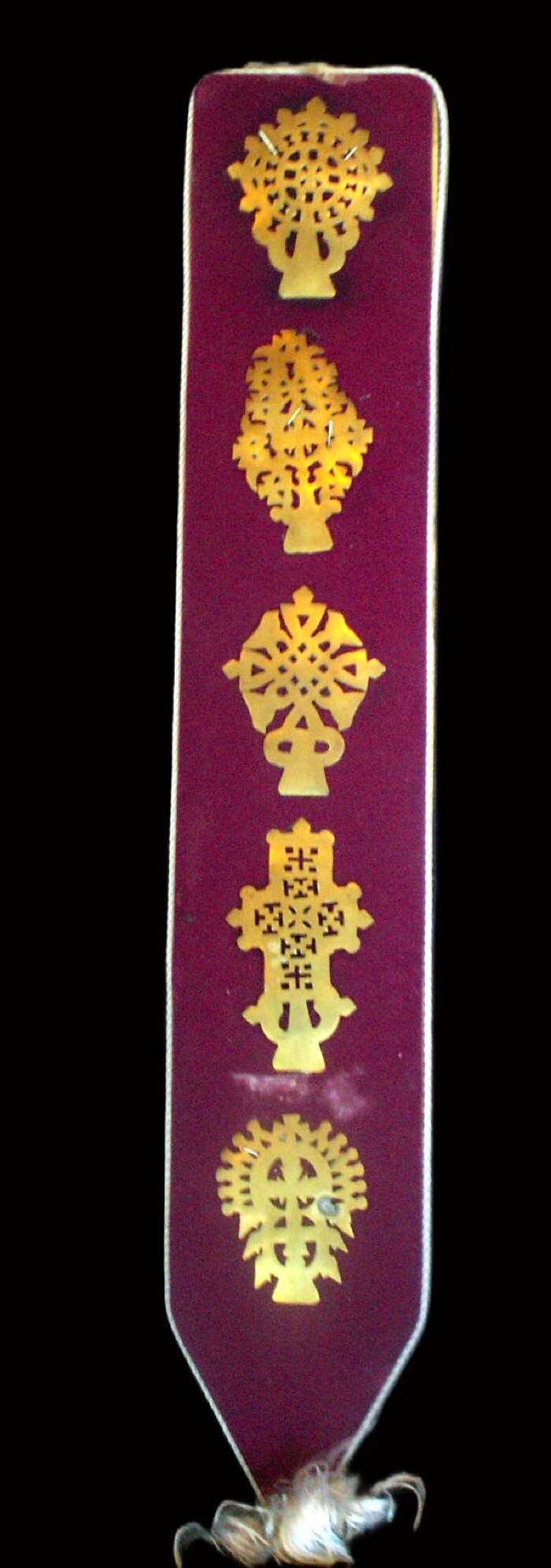Ethiopian Christian Holy Symbol: "Abyssinian Crosses"
Collection: Spiritual Connections
These Ethiopian Christian crosses are sometimes referred to as Abyssinian crosses. The cross is a universal, pre-Christian symbol, but in Christianity it symbolizes the crucifixion of Jesus Christ.
Processional crosses play an active role in Christian religious life in Ethiopia, where churches commonly have at least one large cross. They are prominently featured during services and processions that honor holy days.
Ethiopian crosses equalize the length of the arms and fill in the gaps between them, almost dissolving the cross form into a diamond shape punctuated with interlacing patterns. Ethiopian crosses are invariably made from elaborate lattice work. Openings in the lattice work allowed crosses to be made larger without added weight, and when used in processions made impressive silhouettes against the open sky.
The Christian faith is based on the teachings of Jesus of Nazareth, commonly referred to as Jesus Christ or Jesus or Christ. Jesus, (7–2 BC/BCE – 30–36 AD/CE), is the central figure of Christianity. Most Christian denominations venerate him as God the Son.
The principal sources of information regarding Jesus are the four canonical gospels, Matthew, Mark, Luke and John. The gospels declare that Jesus was a Jew born in Bethlehem, in the Roman province of Judea. At the age of 30, he began to preach throughout Palestine, which was then under Roman rule. The gospels describe miracles that Jesus performed such as raising the dead.
Most critical historians agree that Jesus was a Jew who was regarded as a teacher and healer. He was crucified in Jerusalem, on the orders of the Roman Prefect of Judaea, on the charge of sedition against the Roman Empire. Christians believe that Jesus then rose from the dead and ascended into heaven, from which he will return.
The history of Christianity in Ethiopia is longstanding, dating back to the fourth century C.E., when it became the court religion. Ethiopia was probably the second country, after Armenia, to embrace the Christian faith.
Source:
Source Citation (MLA 7th Edition) "Cross, Crucifix." Historical Dictionary of Catholicism. William J. Collinge. 2nd ed. Lanham, MD: Scarecrow Press, 2012. 116-117. Historical Dictionaries of Religions, Philosophies, and Movements. Gale Virtual Reference Library. Web. 1 July 2013. http://go.galegroup.com.ezproxy.lapl.org/ps/i.do?id=GALE|CX2780400149&v=2.1&u=lapl&it=r&p=GVRL&sw=w "Jesus Christ." Children's Illustrated Encyclopedia. New York: Dorling Kindersley, 2010. 297. Gale Virtual Reference Library. Web. 1 July 2013. Document URL http://go.galegroup.com.ezproxy.lapl.org/ps/i.do?id=GALE|CX1796500200&v=2.1&u=lapl&it=r&p=GVRL&sw=w http://en.wikipedia.org/wiki/Jesus “Processional Cross”. The Metropolitan Museum of Art. 30 June 2013. Document URL: http://www.metmuseum.org/collections/search-the-collections/50010546 http://www.seiyaku.com/customs/crosses/ethiopian.html
